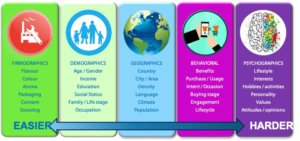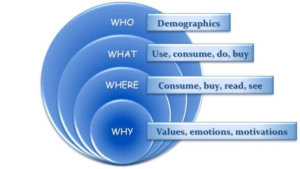Modern consumers are no longer satisfied with generic experiences.
They expect brands to know their preferences, anticipate their needs, and deliver tailored solutions that feel relevant and meaningful.
Hyper-personalisation—a strategy that uses advanced analytics, real-time data, and artificial intelligence (AI)—enables companies to meet these expectations.
In a competitive landscape where consumers are increasingly selective about the brands they support, hyper-personalisation has emerged as a crucial differentiator.
This
strategy enhances consumer loyalty, drives engagement, boosts sales, and establishes long-term market leadership.
If you prefer to listen rather than read:
What Is Hyper-Personalisation?
Hyper-personalization integrates real-time data, advanced analytics, and AI technologies to deliver highly individualised consumer experiences. Unlike traditional personalisation, which typically involves broad segmentation or limited customisation, hyper-personalization uses a more granular approach to tailor every aspect of the consumer journey.
Definition in Context:
While traditional personalisation might include addressing consumers by their first name in an email, hyper-personalization extends to creating dynamic, one-to-one interactions based on purchase history, browsing behavior, and real-time context. This enables brands to provide deeply relevant and meaningful experiences that resonate with consumers.
Example:
Diageo’s “What’s Your Whisky” tool is a standout example of hyper-personalisation in action.
By analysing consumer flavour preferences through a simple digital quiz, the company offers tailored whisky recommendations. This initiative, rolled out across Europe and North America, increased online engagement by over 20% in 2022, underscoring the effectiveness of such targeted strategies (source).
The Strategic Importance of Hyper-Personalization
1. Driving Consumer Loyalty
Hyper-personalization builds emotional connections with consumers by making them feel valued and understood. Emotional bonds are critical in driving loyalty, as consumers are more likely to return to brands that demonstrate a deep understanding of their needs.
Example (Europe):
Nespresso’s use of purchase history and preference data to create personalized product recommendations has significantly enhanced customer loyalty. In 2023, tailored email campaigns in Germany and France achieved a 25% higher open rate than generic emails, driving repeat purchases and long-term customer engagement (source).
According to Epsilon, 80% of consumers are more likely to make a purchase when brands offer personalised experiences (source).
2. Increasing Conversion Rates
Hyper-personalization is not just about building relationships; it’s also about driving immediate results. By offering tailored recommendations, brands can significantly boost conversion rates and average order value.
Example (Asia):
Alibaba’s Tmall Genie smart speaker integrates with consumer appliances to provide hyper-personalized shopping lists and reminders. During the 2023 Chinese New Year, the platform’s recommendations for festive groceries and decorations drove a 30% increase in repeat purchases (source).
Statistic:
McKinsey reports that personalization can reduce acquisition costs by as much as 50% and lift revenues by 5–15% (source).
3. Strengthening Brand Differentiation
In saturated markets, hyper-personalization helps brands stand out by creating unique and memorable experiences.
Example (Global):
Coca-Cola’s Freestyle vending machines allow consumers to create custom beverage blends. The data collected from these machines has informed the launch of new products tailored to emerging … Click to continue reading







 OK I’m starting off slowly, but do you know who your customers are? Not who uses your category, but who the people are that actually buy your product or service today? How much do you really know about them?
OK I’m starting off slowly, but do you know who your customers are? Not who uses your category, but who the people are that actually buy your product or service today? How much do you really know about them?









